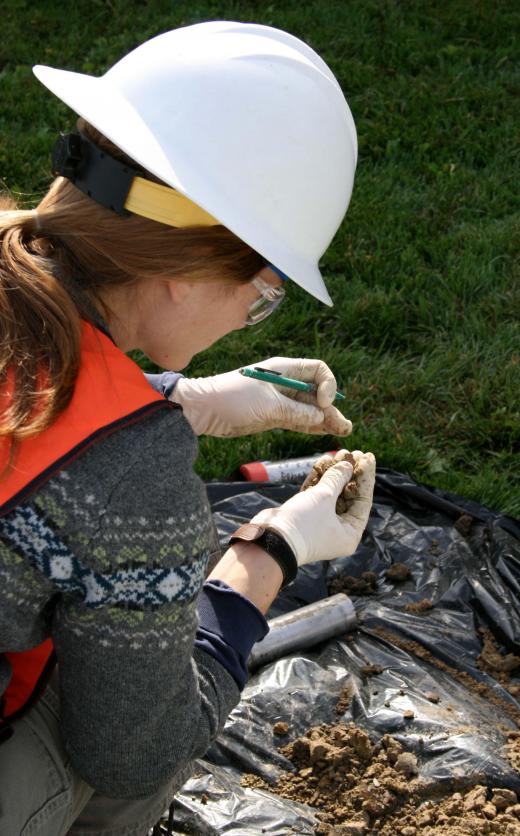What is a Compaction Test?
 Mary McMahon
Mary McMahon
A compaction test is a soil quality test used to assess the level of compaction which can occur in the soil on a site. Compaction tests are commonly performed as part of a geotechnical profile of a building site. They may also be performed to learn more about a soil in a particular area, whether or not the area is slated for development. A geotechnical engineer, geologist, or soil scientist may conduct a compaction test.
In some cases, the test may be performed in situ, in which case the testing options may be more limited, and the profile will not be as complete. Compaction tests can also be performed in a lab environment with soil samples taken from a site. The lab allows for more controls and more finesse of the test. Soil often needs to be taken back to the lab anyway for the performance of additional soil quality tests which are designed to provide more information about the characteristics and composition of the soil.

The goal of a soil compaction test is to find the maximum practical density of the soil. For the test, a sample of soil is packed into a mold and subjected to pressure to force the soil to compact. The test is repeated several times, with the moisture level of the soil being adjusted to achieve a range of values. The test results can be used to determine how much the soil can compact, what the optimum moisture level on the site is, and what the maximum dry density of the soil is.

The more moisture in the soil, the more it can be compacted. Compaction tests provide important information about the soil quality at a site which can be used to determine where the best building sites are, how much weight the soil can withstand, and whether or not the site is even appropriate for building. These tests are one among many assessments performed when evaluating sites to create a complete picture.
The development of the soil compaction test is credited to Ralph R. Proctor, and it is sometimes known as the Proctor Test. Proctor developed the test in the 1930s, and the mechanism of the test has not changed much since; for testing, a mold of standardized size is used, with a mallet of standardized weight dropped from a standard height to achieve the desired level of pressure. Like other scientific tests, the compaction test is designed to be repeatable by anyone with a knowledge of the procedure and the standard equipment.
AS FEATURED ON:
AS FEATURED ON:












Discussion Comments
Well, I understand compaction and its goals, but what about the depth of compaction and what about the deeper layers of soil that will carry the structure's load later on and these layers have not been compacted?
I have read that standard compaction tests on soil where a road is to be built involve dropping a hammer multiple times consecutively on the soil. It sounds like it would be really rough on the soil, but I see why the test is so intense.
The soil under a road will be compacted every time a vehicle drives over it. So, a busy highway might carry that weight hundreds or even thousands of times a day.
I think that the intensity of compaction tests probably increases with the load that will likely be put upon the area. I can see how soil compaction under a highway would be more intense than under a house.
@DylanB – Maybe sudden impact gives a good example of what can happen to the soil. It gives the worst case scenario.
Even if you build over time, the soil will eventually compact, probably to the same level that it would if suddenly subjected to all the weight of the structure. I'm sure that geologists know what they are doing.
I think it's strange that the Proctor compaction test involves dropping a mallet on soil. If you were going to build something on a site, wouldn't the weight be added slowly over time, as you built more and more onto the structure? I don't see how sudden impact can give an accurate description of what would happen if you built on top of the soil over a period of months.
Post your comments